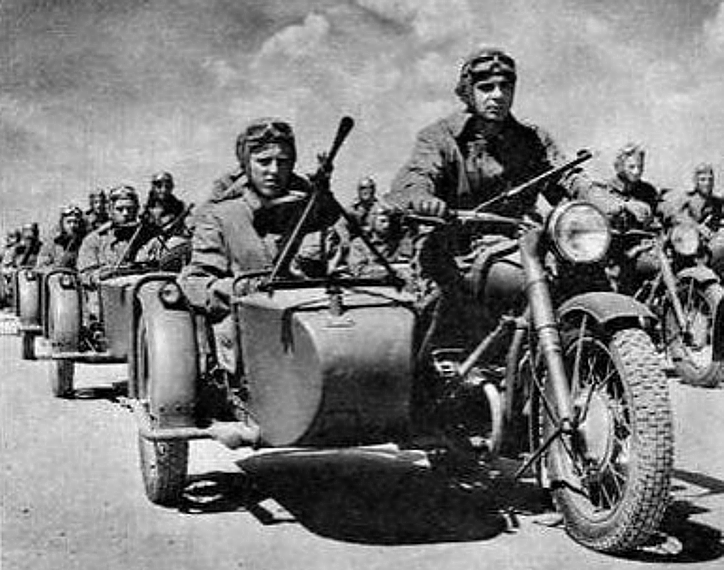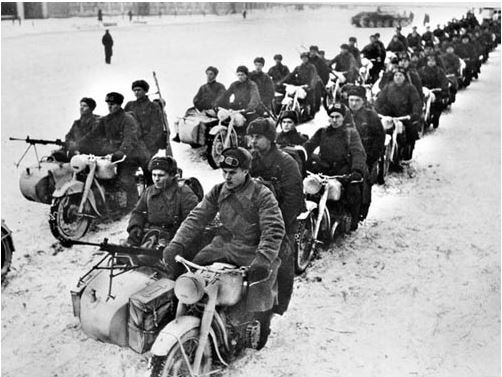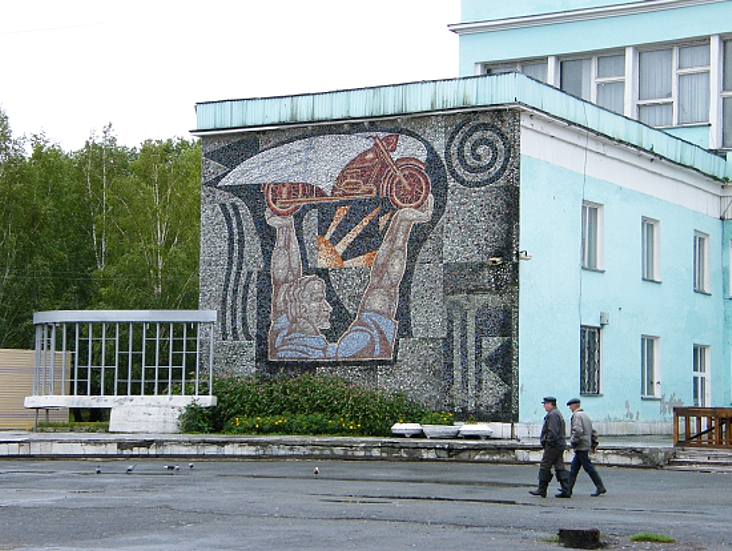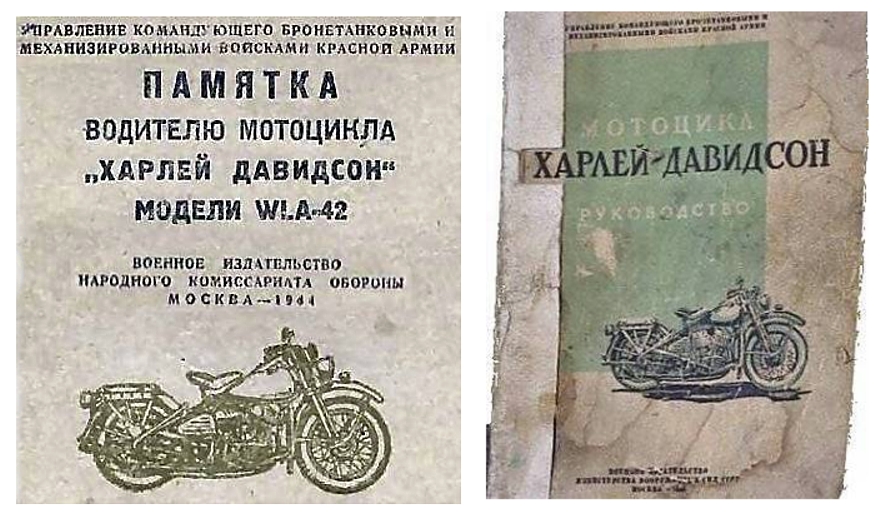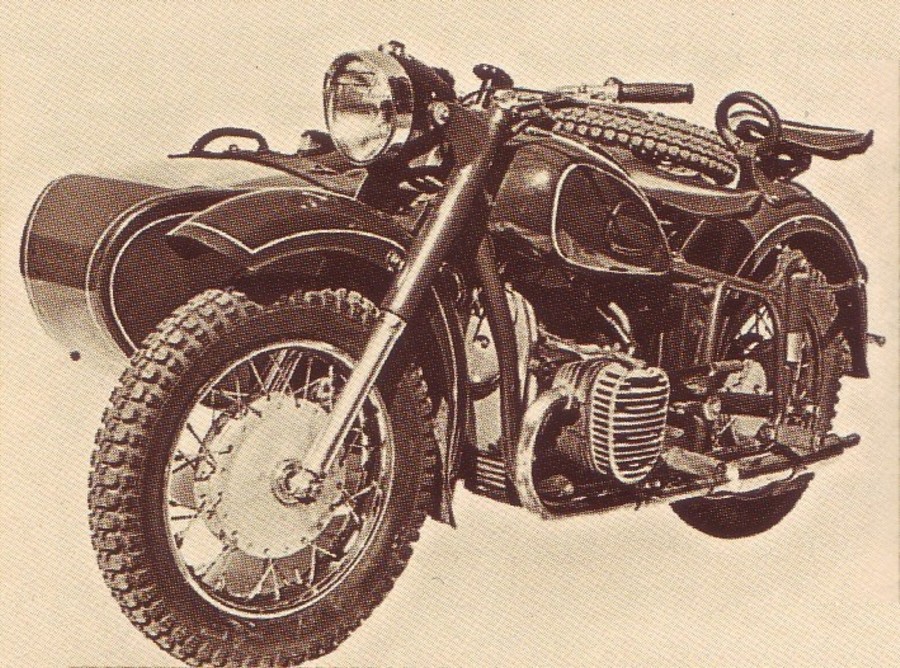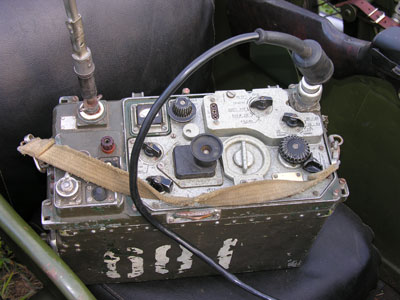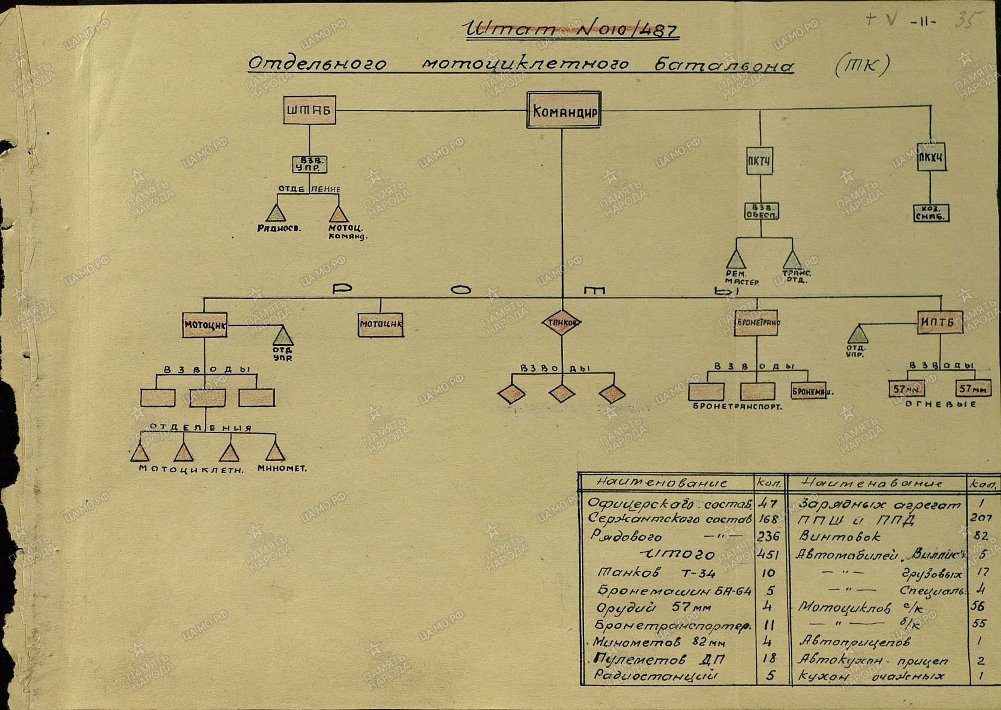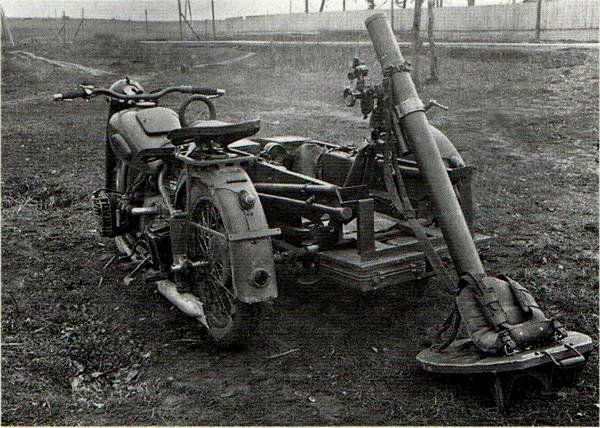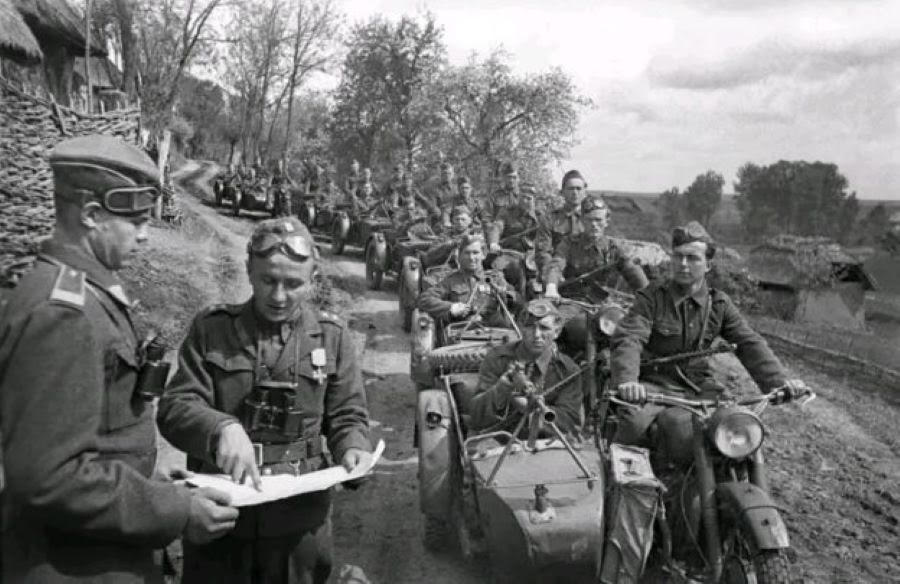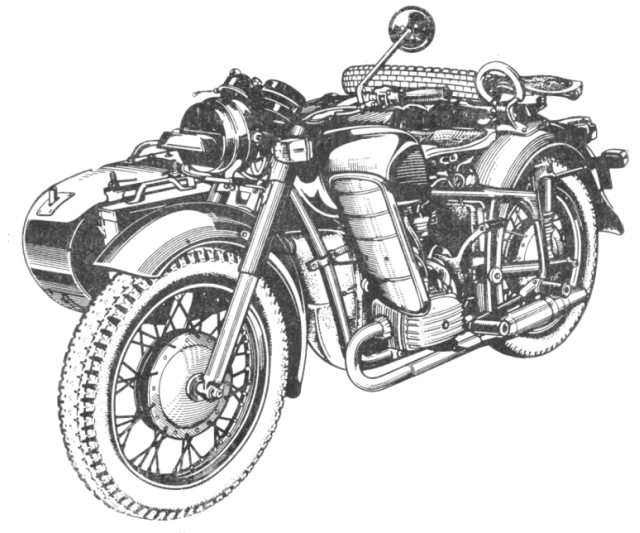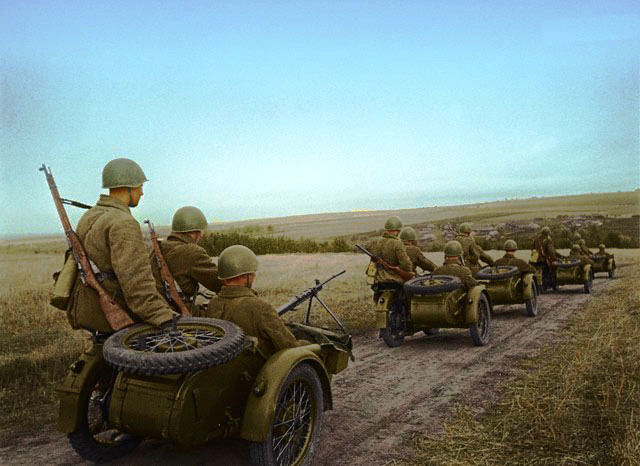Motorcycle company of the reconnaissance battalion of the Soviet Army
The mass use of motorcycles with a side-car as a means of transporting infantry began in the Red Army in the mid-1930s and coincided with the creation of large tactical armoured units – mechanized corps. At that time, motorcyclists were assigned the task that was given to the light cavalry in the 19th century: scouting, moving in the vanguard of the main group of troops, occupying important objects (bridges, crossings, narrow passages). The basic tactical relationship of motorcycle troops (and at the end of the 1930s they even had their emblem) was a motorcycle regiment – each a large sub-unit of about 1,500 men, over 300 motorcycles, dozens of light trucks, ten armoured cars equipped with rifles and 6 45 mm anti-tank guns.
It is not difficult to imagine that already in the first border clashes in 1941, the main shortage of motorcycle subunits became apparent, about which the German war theorist G. Guderian wrote a year earlier: “fighting”. As a consequence, by the fall of 1941, many motorcycle regiments, which had lost their personnel and equipment in battle, were disbanded, and many were reorganised into rifle units. Before the battle of Moscow began, motorcycle regiments and battalions with a new organisation and reduced numbers began to be formed. These were subunits, which, on a par with motorcycles, the number of which was significantly reduced, also included light and even medium tanks, armoured cars, armoured personnel carriers and small calibre anti-tank defence weapons and artillery. In terms of their structure and tasks, such regiments roughly corresponded to the German reconnaissance battalions, and in terms of fire power, they were far superior to them. Having demonstrated their effectiveness in combat, motorcycle units actively participated in the liberation of the Soviet Union and the countries of Eastern Europe, always advancing at the front, in the vanguard, in the edge of Soviet armoured wedges.
In January 1941 the first preliminary batch of Moscow MMZ (Moscow Motorcycle Plant) M-72 was completed, 1753 motorcycles were produced by MMZ prior to evacuation from Moscow. The motorcycles production went on at MMZ until October 1941, when a resolution of the State Committee of Defence stated the plant was to be evacuated to Gorky (GMZ) and other locations.
It was in Great Patriotic War time, when 20 October 1941 Moscow was announced a besieged state and on 21st Evacuation Committee under Council of People’s Commissars of the USSR issued order no. ÑÝ175 that Moscow motoplant (MMZ) be removed to Irbit. This date since then has been considered as birthday of Irbit motorcycle plant (IMZ).
Motorcycles were assembled from Moscow parts, before being evacuated once again, to the small town of Irbit in the Ural Mountains, far out of range from German bombers.
By Alexander Bulanov: “It was on 17th November 1941 when first train with Moscow motorcycle plant arrived to Irbit and since that date the town has changed it destiny for motorcycles and motorsport. The War was going when Irbit held its first motocross competition…”
Until 1945, the purely basic motorcycle combat unit was a motorcycle company, compact, easy to control and mobile, equipped only with light arms. In the course of the post-war reorganization of the Soviet Army, motorcycle companies were included in the reconnaissance rifle battalions (later – motorized rifle battalions) and armoured divisions.
The big problem was the insufficient off-road efficiency of motorcycles in conditions of off-road and marshy ground, because the Soviet Army was equipped with only one motorcycle model – the M-72, which was actually a heavy civilian motorcycle, only slightly adapted to military needs.
Let’s not forget that the Soviet Union received some 34,000 motorcycles under the Lend-Lease agreement. Of these, no less than 26,000 were Harley-Davidson WLA chain-driven solo motorcycles, the others Indian 741, 340 and 344, as well as several British types. Maybe others. Most of the WLA’s delivered to the USSR were then equipped with the M72 side-car and a passenger/pillion seat on the luggage rack upon arrival in Russia, and many were used to transport a field mortar and crew. With over 26.000 WLA’s issued to the Red Army, the Ministry of the Armed Forces of the USSR even printed their own technical manuals.
Even with the end of the Great Patriotic War (World War II) the Soviet Union continued to implement and maintain a vast military force, and motorcycles still played their part. Only when the Kiev Motorcycle Plant developed a special military motorcycle with increased off-road capability MW-750 in 1964, the state of affairs improved.
KMZ (Kiev Moto Plant) was tasked with the production of military motorcycles.The new motorcycle was built specifically for the needs of the military; it had a differential and side-car wheel drive, which in combination with a low-compression side-valve engine with high traction increased its off-road capabilities many times over. And although in terms of performance, the new motorcycle was still inferior to the main military opponents of the M-72 – the “green Wehrmacht elephants” BMW R-75 and Zundapp KS-750, but it surpassed them with simplicity of construction and low price, and most importantly – virtually all its parts were spare parts with civilian parts of heavy motorcycles, which in the event of the outbreak of war facilitated its maintenance and repair.
In the late 1960s, the world was again on the brink of a global armed conflict. The Soviet army was preparing for military operations on a large scale, and its organisation and tactical assumptions fully corresponded to the tasks that it would face in a confrontation with the troops of NATO countries. After the outbreak of the conflict, strong Soviet armored groups deployed in Eastern Europe were to crush NATO troops and occupy Western Europe with a violent blow. Offensive operations of unprecedented and swift momentum were planned, therefore great importance was attached to increasing the mobility of troops. In European conditions, with a well-developed road network, allowing the possibility of quick manoeuvres, motorcyclists had the role of combat insurance, reconnaissance, and destroying enemy communication lines.
The company consisted of one command motorcycle (equipped with a powerful radio station) and 46 line motorcycles in 4 platoons. As a rule, the equipment included military motorcycles of the MW-750 and MW-750M models, which, due to the characteristic hunchbacked form of the tank, received the nickname “camel” in the army. They were practically of the same type, and the main difference between them was the presence of a differential lock in the MW-750, the lack of which in the MW-750M was compensated by the addition of a reverse gear.
There is also a known case when one of the company’s platoons, playing a training role, was equipped with outdated military motorcycles – K-750W, which did not have a wheel drive. It was found that since such motorcycles are easier to drive, they are better suited for training young soldiers. The crew of each motorcycle consisted of two people – the driver and the gunner, all gunners also learned to drive a motorcycle and, if necessary, could replace the missing driver. The driver was armed with an automatic submachine gun, which was attached to special clamps inside the side car while driving. The gunner was equipped with a 7.62 mm PK machine gun, Degtyareva (or Kalashnikova), introduced in 1961, mounted on a swivel bracket, enabling firing while driving both in the direction of the motorcycle’s movement and backwards, as well as mounting the weapon in the marching position. Machine gun ammunition was fed by tapes, each with 100 rounds. Thus, the main fire of the motorcycle company were its 46 PK machine guns. Such considerable fire-power for the company, combined with high mobility, gave the motorcycle company a chance to avoid extinction in the event of an unexpected encounter with the overwhelming enemy forces, and also to prevent a smaller opponent from obstructing the completion of a combat task.
There are many curious military experience reports as reports on armour reconnaissance. In short in most cases “motorcycle” (or reconnaissance in fact) battalions were split by separate reconnaissance patrols/groups with the rest of the battalion kept as a reconnaissance reserve. In some cases motorcycle battalions/regiments could be employed as whole units for other missions (screening, security, flank guard, vanguards in cases when there was no contact with enemy, raids etc).
In case of encountering enemy armoured weapons, the First Platoon had one RPG-7 grenade launcher, and each motorcycle was equipped with anti-tank grenades. Nevertheless, an experienced company commander should have kept the probability of such meetings to a minimum – the task of the motorcycle company was primarily reconnaissance, not combat.
Beginning in the mid-1970s, motorised companies of the Red Army began to receive new vehicles – wheeled armoured personnel carriers of the BTR-60 family and a platoon of PT-76 floating tanks and new motorcycles with overhead-valve engines. It was assumed that this would increase the mobility and fire power of the company. The mobility and fire power increased, but according to the officers who served in the reconnaissance battalion at the time, the effectiveness of such a company as a reconnaissance unit decreased significantly. (Naturally, such assessments took into account the perspective of a global war.) In fact, a motorised rifle company was obtained, reinforced with amphibious tanks, with superfluous fire-power for the reconnaissance unit. The roar of tank engines made it easier for the enemy to detect such a company, and the theoretically high ability to overcome difficult terrain by powerful combat vehicles in practice did not always meet the needs of scouts. Eight soldiers easily got the motorcycle over an obstacle that proved insurmountable for an armoured personnel carrier. The low weight of the motorcycle – up to 450 kg – made it possible not to worry about the condition of the bridges, and in special cases – to overcome an obstacle on hastily thrown boards. In general, the armoured vehicles, although they had high defensive qualities and fire-power, made the motorised reconnaissance company a sub-unit too heavy and loud, unsuitable for reconnaissance needs. Apparently, however, not all units were re-armed this way, because in the mid-1980s, purely motorcycle companies were preserved in the reconnaissance battalions of the Soviet Army.
Fortunately, the global armed conflict did not break out. An era of little unannounced wars and criminal international clashes had come.
The new conditions of combat operations required new techniques and a different organisation of the armed forces; in the fields of new conflicts there was no room for scout motorcyclists any more, and these troops were a thing of the past.
In 1972, soldiers and officers of the Soviet Army’s combat units, intensely engaged in combat preparation, had a high level of morale. As recalled by the Army veterans who at that time served in the motorcycle company of the motorised rifle division of the Western Group of Forces (stationed in the GDR), no events, referred to today as illegal relations, took place in their sub-units. All the soldiers’ forces were absorbed in exhaustive training, and without a sense of camaraderie and mutual help, the sub-unit could not simply fulfil its tasks. In the event that an inexperienced driver got stuck in the wilderness, if the engine died, everyone rushed to pull it out of the mud, regardless of the length of service and other merits.
The tense international situation forced the Soviet command to increase the combat readiness of entrusted sub-units through exercises simulating real combat operations.
The usual scenario for such exercises for one of the motorcycle companies stationed in Hungary was as follows:
An hour or just minutes after the tipping point was verified and confirmed, the alarm sounded, and the company, having retrieved its weapons, ran to the hangar where motorcycles were standing. In the shortest possible time, with maximum speed, the company had to be moved to the centering area. It was considered a rule that after starting the engine, the rider would shift into first gear as he put his left foot on the left footrest, then release the clutch when lifting his right foot off the ground, and the motorcycle began to accelerate in first gear. The moment when the driver sat on the seat coincided with the inclusion of 2nd gear. Its further existence depended on the speed with which the sub-unit managed to leave the dislocation site – it was assumed, that the enemy is aware of the location of Soviet armored parks and that in the first minutes of the war these facilities will be exposed to rocket and artillery attacks. During one of such training sessions, a second lieutenant, commander of a motorcycle company, while leaving the hangar, turned his attention away from driving the motorcycle to check the actions of his subordinates, and at a speed of 60 km/h he hit the hangar door, which had not yet fully opened. The motorcycle was written off after such an accident, and the second lieutenant was seriously injured.
In general, bruises and abrasions were constant companions of motorcyclists’ combat exercises as a result of daily exercise. Young people came from the civilian population, initially afraid of even the sound of heavy motorbike engines, turned into great drivers and trained soldiers. In 1972, in combat units, no- one even thought – unlike the modern army – to set up medical boards to inspect the signs of beatings by comrades. If a soldier had scratches, it was known that it was due to combat training, and therefore – for the Motherland.
To become a fully-fledged scout-motorcyclist, certain requirements had to be met. Here are some of them: drive while standing on the left footrest in a crouching position, hiding from fire behind a motorcycle; shooting a rifle while driving to a suddenly appearing bust-shield and (unbelievable!) changing the wheel of the side-car while driving. This truly circus number was performed as follows: the rider, with a sudden right turn, lifted the side-car (the K-750W motorcycle was used) and, using the steering wheel, kept the motorcycle on two wheels with the side-car wheel suspended in the air. During this time, the gunner took out the wrench and unscrewed the spare wheel and the wheel of the side-car, swapped them and tightened the nuts. All this time, the driver kept going in circles, keeping the motorcycle on two wheels with the side-car lifted upwards. Hardly any of today’s experienced “fairy tales”.
Soviet motorcycle units were traditionally part of the armoured units, and their motorcycles were classified as armoured vehicles. Therefore, in 1972, soldiers of motorcycle companies wore the uniform of armored units established by order No. 250 of 1970. The summer and winter parade, parade-out, everyday and field uniform of motorcyclists was the same as for all land forces, and a special feature of the armored units was the black color of the rims of caps, epaulettes, tabs and a special sign on the sleeves, worn on the parade jacket and coat .
The mark on the sleeve was in the form of a shield with a red star at the top (emblem of the Armed Forces of the USSR), and at the bottom – a drawing of the T-60 tank (emblem of the armoured forces). Field equipment was of one type, common to the entire Armed Forces. In addition to the usual set of uniform and equipment, a motorcyclist, as a crew member of a combat machine, was entitled to a set of working uniform, as well as a tank suit, helmet and goggles. As recalled by veterans of the Soviet Army, the combat service made its adjustments to the external appearance of the motorcyclist. Steel helmets were never used, with only the bare minimum necessary; shovel-shovels, extremely inconvenient for a motorcyclist, were attached not to a leather belt, but to handles on the side of the side-car; the entire system of shoulder straps with pouches was usually left in stock. The pathetic quality tank goggles of Soviet production, issued by stewards, were replaced by ski goggles, bought by soldiers for their own money in sports shops. The external appearance of a Soviet military motorcyclist would not be complete without the piles of the “Red Star” newspaper, which was inserted into the space between the uniform and the tank suit, as well as in the headphone for additional protection against the icy, blowing winds.
The service of a military motorcyclist was, in fact, “both extremely dangerous and difficult”, the more it is a pity that there was and is very little information about these unusual type of troops. War correspondents, dispatched by the main political leadership, were to deliver images of the Soviet Army’s all-crushing power, giant rockets, supersonic planes, and armored monsters breaking huge trees like matchsticks. There was no place for any motorbikes there. Therefore, now the image of the combat service of these extremely interesting troops must be recreated from excerpts from testimonies, from the memories of a few veterans. Like the entire Soviet Army, they were ready, in a difficult moment, to defend their homeland and, if necessary, lay down their lives for it.
sources:
- Moto Moscow Russia
- Stanisław Nagorny
- oppozit.com
- Alexander Bulanov, Irbit Russia
- KOLYASKA
- Steve Wiggins
- Warboy
- ART Moscow Russia
- b-cozz archives


